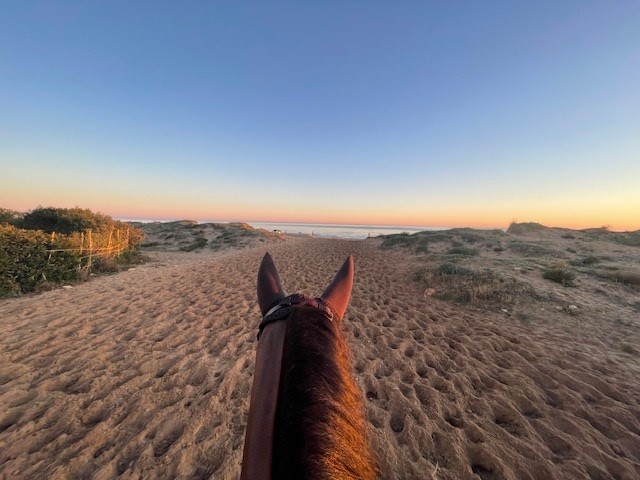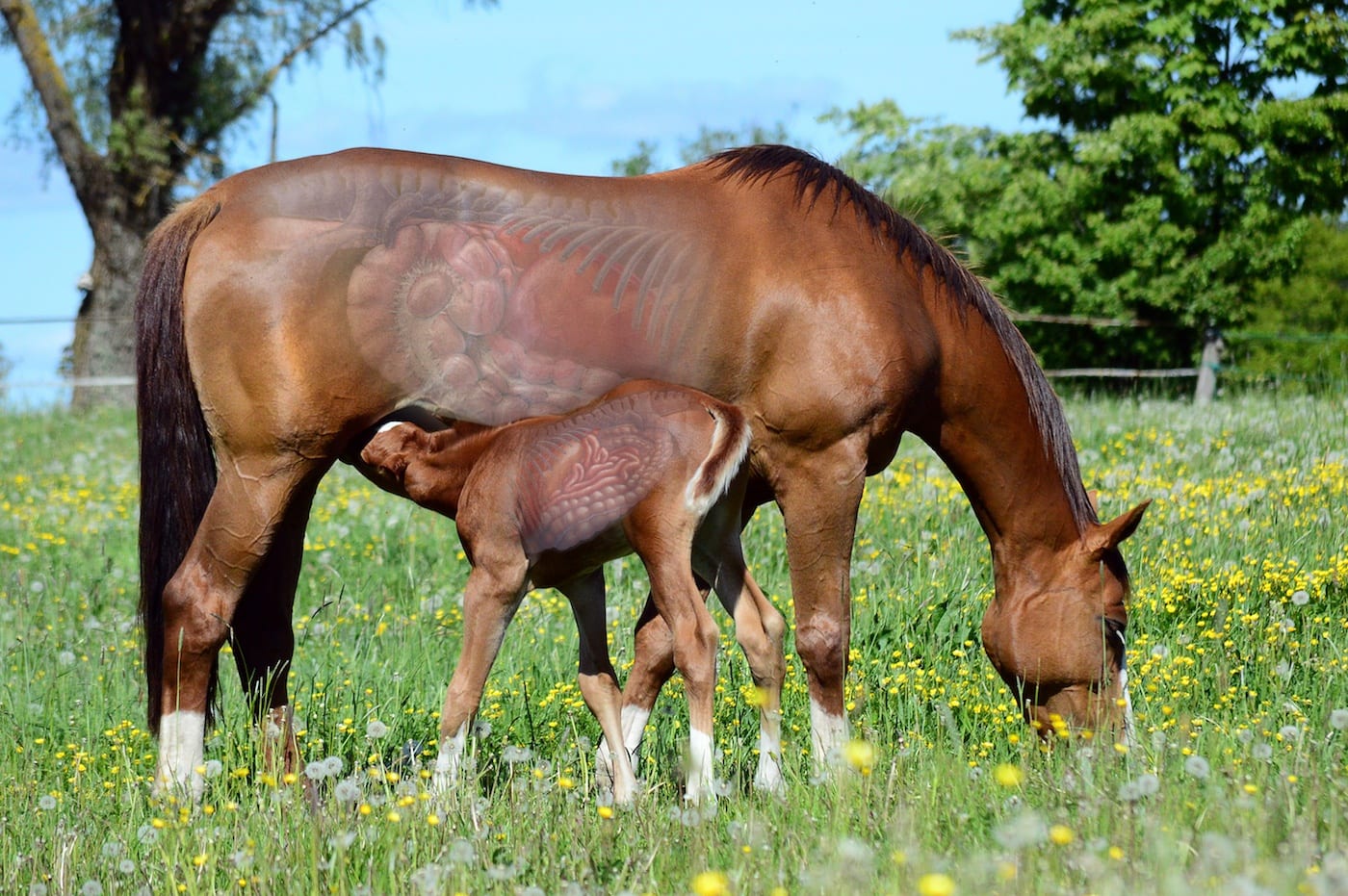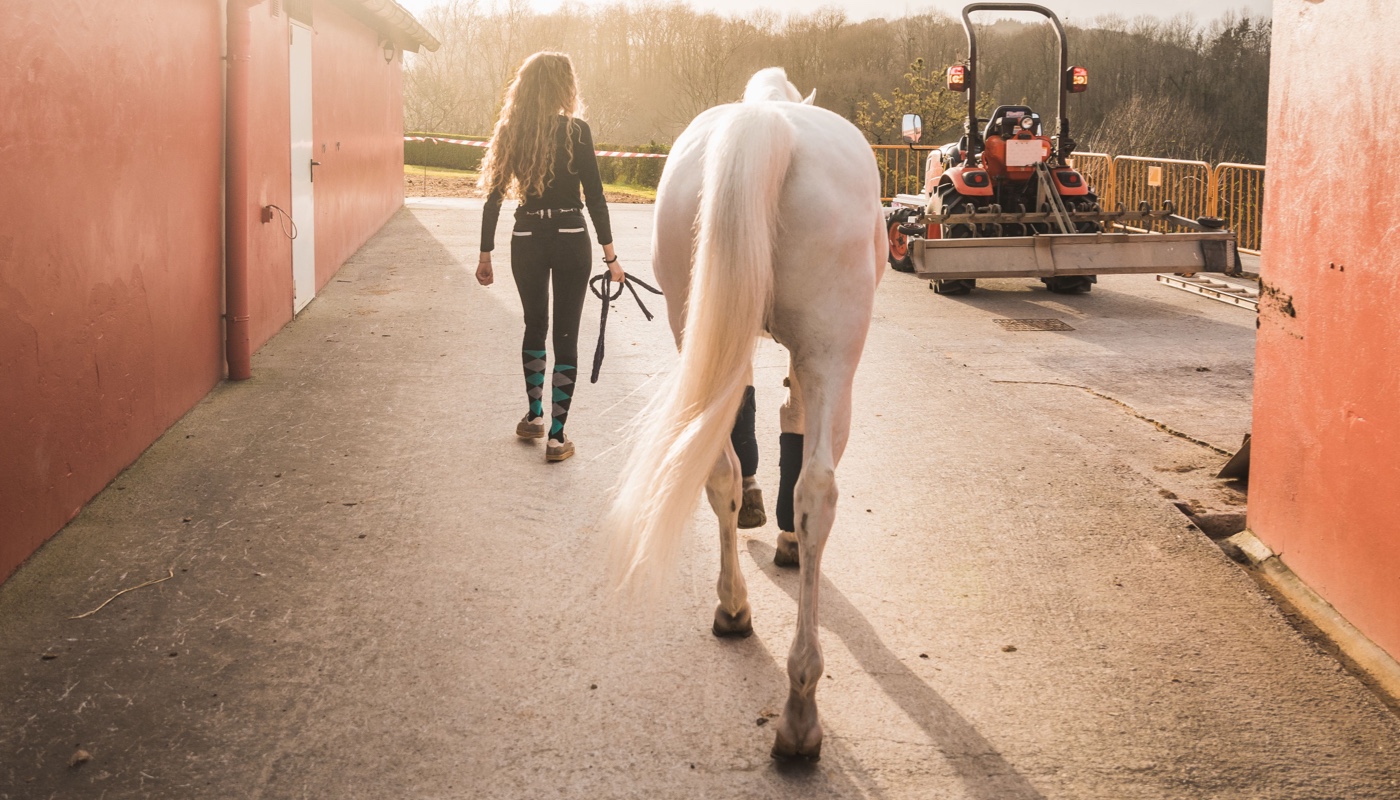The danger associated with drought season has been devastatingly clear to horse owners this year, as thousands of horses were evacuated to avoid wildfires in Colorado and across the West. These rapidly moving fires were caused by different things — a lightning strike, a camping stove, a campfire, among others — but all were fueled by dry conditions brought on by summertime drought.
Very few of us will face the devastation of a forest fire, but all horse owners deal with the effects of parched grass and summer drought conditions. In the first of a two-part series we’ll provide some ideas for horse owners with little control over turnout schedules, and in the second, we’ll address pasture management. Be sure to subscribe to the SUCCEED blog to follow both parts of this series on drought management.
Evaluating Your Horse’s Nutritional Health
Summertime can take an unexpected toll on your horse’s health. The nutritional value of grass plummets when it reaches a certain age, and as a result, our horses’ nutrition is compromised. So even though the view outside your barn window may be misleadingly green, now isn’t the time to fall off on your monthly weight evaluations.
Keeping Your Horse Healthy at a Boarding Stable
One of the best strategies to combat drought conditions is proper pasture management, but if you don’t have control over your horse’s turnout, you can still boost his overall wellness with a few extra steps:
- Keep an eye out for dehydration and heat-induced illnesses — horses can sweat up to four gallons of water and electrolytes per hour on a hot day.
- Provide adequate water, shade, and salt for your horse, as he’ll need a full range of nutritional support to help combat the effects of summer.
- Stay on top of parasites with regular de-worming. Parasites can lurk in taller grass, so encourage your barn manager to brush hog regularly.
- Paint your horse’s feet every other day with a hoof conditioner inside and out to keep the hoof from drying out from lack of moisture in the soil.
- Hose your horse after exercise and when bringing him in from the field.
- Ask your barn manager to turn out in early morning and evening to avoid midday heat.
- Use sunscreen on white areas of your horse’s face.
- Hose down stalls and wet hay to add moisture to your horse’s environment and digestive system.
The Importance of Good Digestive Health When the Temperature Rises
It’s imperative to keep your horse’s GI tract healthy so that he can get the most out of lower-nutrient grass. Good GI health aids natural immunity to help horses deal with less-than-idea conditions from the inside out, so be sure to feed a high-fiber diet, and try to cut out hard-to-digest grains. Twice-yearly dentistry is essential to overall health, as chewing the grass thoroughly aids in nutrient absorption and produces the saliva that helps break down food and buffer the acids in the stomach. Mature grass contains a larger proportion of indigestible fiber than new spring grass, so it’s essential to aid your horse’s digestion however possible.
Supplement Grass Intake with Hay and Hay Alternatives
If you don’t have much control of the quality of your horse’s pasture or his turnout schedule, try supplementing with the following:
- Carefully evaluate the quality and quantity of hay provided, as the drought is making high-quality hay harder to find.
- Talk to your barn manager about increasing hay rations.
- Feed high-protein sources of forage, like soaked beet pulp or alfalfa cubes to ensure a constant energy supply.
- Consider feeding Dengie hay, a commercially produced heat-dried short-cut grass and alfalfa product that provides calories and proteins similar to high-quality hay.
Schedule Turnout to Reduce Fructan Ingestion
Horse owners often mistakenly believe that the risk of colic and laminitis is decreased when grass is no longer springtime-lush. That’s not actually true, as fructan levels are actually higher in mature grass. Higher levels of fructans (or sugars) can upset the balance in the hindgut, leading to hindgut acidosis, laminitis, and colic. Fructan levels are highest in the afternoon on sunny days, so try to move your horse into pastures with shorter grass where the fructans are lower.
Up Next: Pasture-Management Strategies to Beat the Heat
When it comes to drought-preparedness, prevention is the best cure. Be sure to tune into our next post, geared toward preparing and maintaining your pastures this year to avoid drought-related damage next year.



